
The Pomeranian War was a theatre of the Seven Years' War. The term is used to describe the fighting between Sweden and Prussia between 1757 and 1762 in Swedish Pomerania, Prussian Pomerania, northern Brandenburg and eastern Mecklenburg-Schwerin.

The Battle of Ratan was the last battle fought on Swedish soil during the Russian-Swedish War of 1808 - 1809. It took place a day apart from the Battle of Sävar, on 20 August 1809. Having conquered Finland from Sweden, the Russians had a small force in the northern areas of Sweden. The Swedes sought to eliminate this through a combined assault from land and sea, but the Russians moved more rapidly, defeating the Swedish force landed at Ratan at Sävar on 19 August. The next day, on 20 August, the Swedish riflemen was attacked and pushed out of Ratan, turning to the flotilla and starting the evacuation. At the same time, artillery fire from Swedish warships kept the Russians at bay. Peace negotiations followed the heavy fighting.
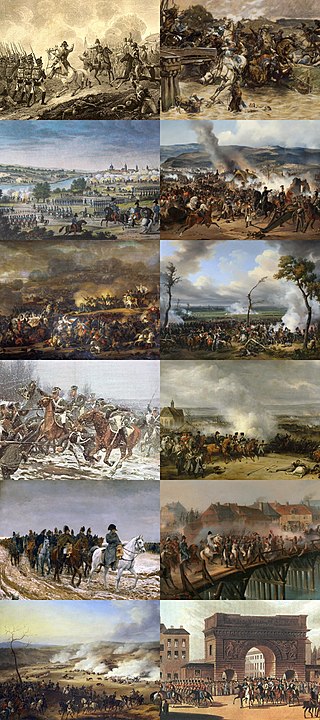
In the War of the Sixth Coalition, sometimes known in Germany as the Wars of Liberation, a coalition of Austria, Prussia, Russia, Spain, Great Britain, Portugal, Sweden, Sardinia, and a number of German States defeated France and drove Napoleon into exile on Elba. After the disastrous French invasion of Russia of 1812 in which they had been forced to support France, Prussia and Austria joined Russia, the United Kingdom, Sweden, and Portugal, and the rebels in Spain who were already at war with France.

The Battle of Lund, part of the Scanian War, was fought on December 4, 1676, in an area north of the city of Lund in Scania in southern Sweden, between the invading Danish army and the army of Charles XI of Sweden. The Danish had an army of about 13,000 under the personal command of 31-year-old King Christian V of Denmark, aided by General Carl von Arensdorff. The Swedish army, which numbered about 8,000, was commanded by Field Marshal Simon Grundel-Helmfelt and the 21-year-old Swedish king Charles XI. It is one of the bloodiest battles in percent of casualties on both sides ever fought in Scandinavia.

The Scanian War was a part of the Northern Wars involving the union of Denmark–Norway, Brandenburg and Sweden. It was fought from 1675 to 1679 mainly on Scanian soil, in the former Danish–Norwegian provinces along the border with Sweden, and in Northern Germany. While the latter battles are regarded as a theater of the Scanian war in English, Danish, Norwegian and Swedish historiography, they are seen as a separate war in German historiography, called the Swedish-Brandenburgian War.
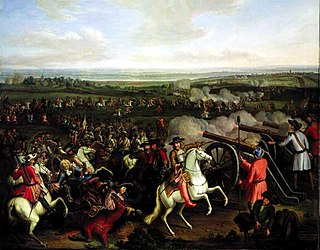
The Battle of Fehrbellin was fought on June 18, 1675, between Swedish and Brandenburg-Prussian troops. The Swedes, under Count Waldemar von Wrangel, had invaded and occupied parts of Brandenburg from their possessions in Pomerania, but were repelled by the forces of Frederick William, the Great Elector, under his Feldmarschall Georg von Derfflinger near the town of Fehrbellin. Along with the Battle of Warsaw (1656), Fehrbellin was crucial in establishing the prestige of Frederick William and Brandenburg-Prussia's army.

Fehrbellin is a municipality in Germany, located 60 km NW of Berlin. It had 9,310 inhabitants as of 2005, but has since declined to 8,606 inhabitants in 2012.

"The Great Sleigh Drive" from December 1678 to February 1679 was a daring and bold maneuver using sleighs by Frederick William, the Great Elector of Brandenburg-Prussia, to drive Swedish forces out of the Duchy of Prussia, a territory of his which had been invaded by the Swedes in November 1678.

The Battle of Frisches Haff or Battle of Stettiner Haff was a naval battle between Sweden and Prussia that took place 10 September 1759 as part of the ongoing Seven Years' War. The battle took place in the Szczecin Lagoon between Neuwarp and Usedom, and is named after an ambiguous earlier name for the Lagoon, Frisches Haff, which later exclusively denoted the Vistula Lagoon.

The siege of Stralsund lasted from 24 July to 24 August, 1807, and saw troops from the First French Empire twice attempt to capture the port city from Lieutenant General Hans Henric von Essen's 15,000-man Swedish garrison. Early that year, Marshal Édouard Adolphe Casimir Joseph Mortier blockaded the city for two months before he was called elsewhere. In his absence, the Swedes drove back the inferior blockading force. After Mortier returned and pushed Essen's troops back in turn, the two sides quickly concluded an armistice. The truce was later repudiated by King Gustav IV Adolf of Sweden, and Marshal Guillaume Marie Anne Brune then led 40,000 French, German, Spanish, Italian and Dutch soldiers against the fortress. Fearfully outnumbered, the Swedes abandoned the Baltic Sea port of Stralsund to the Franco-Allies in the action during the War of the Fourth Coalition, part of the Napoleonic Wars. As a consequence, Sweden also lost the nearby island of Rügen.
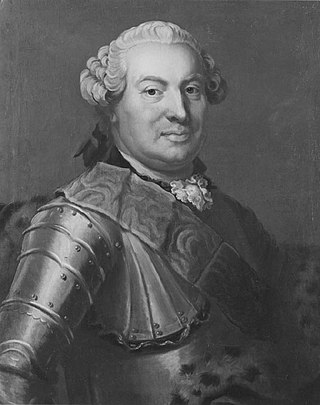
Gustav David Hamilton (1699–1788) was a Swedish count and soldier. He was born in 1699 in Barsebäck, Malmöhus County, Sweden. He left Sweden in 1718-1720 to educate himself in warfare in France. In 1720 he became a captain and in 1740 he became a lieutenant colonel, both during French service. In 1741 he returned to Sweden and made a series of career progressions. In 1741 he became a colonel, in 1747 a major general and in 1755 lieutenant general. He was also named a count in 1751, and in 1765 he gained the right to the title field marshal. In 1778 he was made a Lord of the Realm. He was also politically active in the Hats.
The Blockade of Stralsund occurred during the Seven Years' War when a Prussian force invested the Swedish garrison of Stralsund, the capital of Swedish Pomerania. Rather than lay formal siege to the port, the Prussians cut it off by land and blockaded it. They were unable to cut it off by sea, owing to a lack of a Prussian fleet, and eventually the blockade was abandoned when the bulk of Prussian forces were withdrawn to fight in other theatres.

The Helsinki village landing, or the Combat of Helsinge, was fought during the Finnish War between Sweden and the Russian Empire on 26–28 September 1808, a part of the battles of the Turku archipelago.

The Battle of Nyborg took place between Sweden and the combined forces of Denmark, Dutch naval forces under Michiel de Ruyter, troops of Brandenburg-Prussia, and Polish–Lithuanian Commonwealth forces under Stefan Czarniecki. The battle was engaged on 14 November 1659 at Nyborg on the Danish island of Funen. Nyborg was the final major battle of the Dano-Swedish War of 1658 to 1660.

The Swedish invasion of Brandenburg (1674–75) involved the occupation of the undefended Margraviate of Brandenburg by a Swedish army launched from Swedish Pomerania during the period 26 December 1674 to the end of June 1675. The Swedish invasion sparked the Swedish-Brandenburg War that, following further declarations of war by European powers allied with Brandenburg, expanded into a North European conflict that did not end until 1679.
The Skirmish at Nauen, took place on 27 [O.S. 1675] 6 near the town of Nauen between the vanguard of the Brandenburg-Prussian army and Swedish rearguard units during the Swedish-Brandenburg War.
The Battle of Rathenow was the first engagement between the forces of Brandenburg-Prussia and Sweden in the Swedish-Brandenburg War.
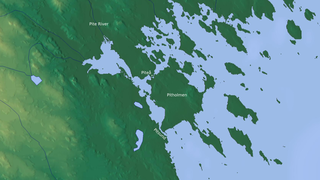
The Battle of Piteå occurred on 25 August 1809, near Piteå, Sweden. A Swedish naval force under the command of Major C.F. von Hauswolff was ordered to cut off the northward retreat of a Russian force under General Nikolay Kamensky which had been defeated by the Swedes five days earlier at Ratan. The Swedish attempt to hem in the Russians was rebuffed as the Russian victory became the last battle which took place on Swedish soil during the war, and remains today the most recent battle to have taken place in Sweden.
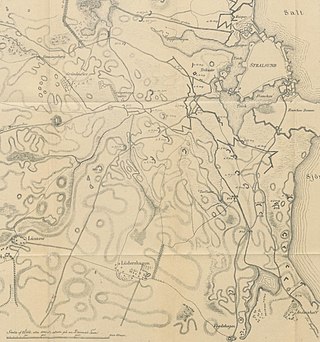
The Great Sortie of Stralsund was fought in the Franco-Swedish War on 1–3 April 1807, in Swedish Pomerania. A French army under Édouard Mortier invaded Swedish Pomerania in early 1807 and initiated a blockade of the Swedish town of Stralsund, to secure the French rear from enemy attacks. After several smaller sorties and skirmishes around Stralsund, Mortier marched part of his army to support the ongoing Siege of Kolberg, leaving only a smaller force under Charles Louis Dieudonné Grandjean to keep the Swedes at check. The Swedish commander Hans Henric von Essen then commenced a great sortie to push the remaining French forces out of Swedish Pomerania. The French fought bravely on 1 April at Lüssow, Lüdershagen and Voigdehagen, but were eventually forced to withdraw; the Swedes captured Greifswald the next day, after a brief confrontation. The last day of fighting occurred at Demmin and Anklam, where the Swedes took many French prisoners of war, resulting in the complete French withdrawal out of Swedish Pomerania—while the Swedes continued their offensive into Prussia. After two weeks Mortier returned and pushed the Swedish forces back into Swedish Pomerania. After an armistice the French forces once again invaded, on 13 July, and laid siege to Stralsund, which they captured on 20 August; all of Swedish Pomerania was captured by 7 September, but the war between Sweden and France continued until January 6, 1810, when the Swedes were finally forced to sign the Treaty of Paris.

The Battle of Skellefteå took place during the Finnish War, on 15 May 1809, when 6,000 Russians under Pavel Andreyevich Shuvalov attacked 700 Swedes under Johan Henrik Furumark, at Skellefteå, Sweden. The Swedes, who fought a delaying action to buy time for their provisions to be escorted to safety, were captured as the Russians flanked around and cut-off their way of retreat. Most provisions, however, were saved.















